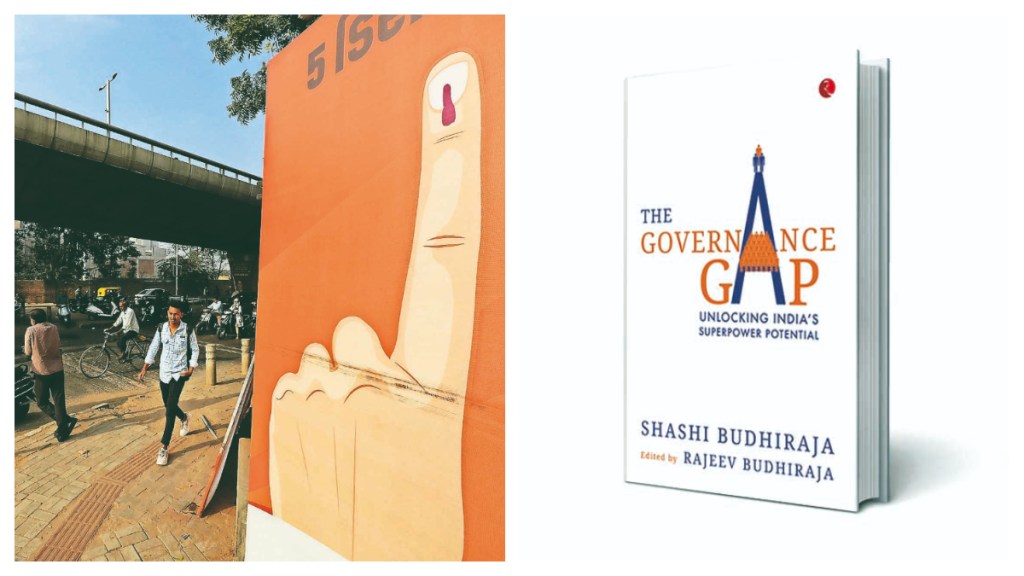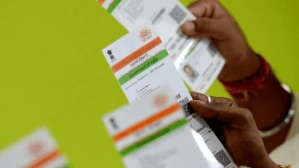For a person who has been tracking Indian polity and economy for about eight decades, Shashi Budhiraja brings out a rather hard-hitting book on India’s progress, titled The Governance Gap. As the title suggests he points out the gaps in our political and economic systems based on facts and data and devoid of emotion. The political superstructure needs reforms that can come only from within, as people design the systems that they ultimately operate. The economic scenario needs improvement, which can be done provided we get the political ideology right, which is hence a circular puzzle. Yet, he is very optimistic about the future of India.
The book is partly a narrative of developments in various sectors since independence, along with his commentary on them. While these facts are well known, putting them together cogently with deep analysis is what makes Budhiraja’s book stand out.
Let’s start at the beginning. Yes, India has had fair elections since we started our democratic journey, which is something that we can be happy about, given how democracies have tended to wilt at different points of time. However, he points out that over time elections are driven significantly by money power and the majority of those who get elected have high levels of wealth. Moreover, given that up to over 40% of legislators have a criminal background does not bode well for a democracy.
The same degradation gets reflected in the quality of proceedings in both Parliament and state legislatures. Backed by data he shows how the number of sessions have come down, with most of the time spent in heckling one another, thus making meaningful debates impossible. Due to paucity of time it has been pointed out that even serious policies like the Budget have been passed without any discussion. He brings up an imperative point when he says that criminality and corruption are now well permeated in the legislature. This, he points out, holds true for all parties and none have been an exception, which is worrisome.
In the same vein, he highlights the challenges of governance. As criminality and corruption dominate elections, the winning set of parties have to accommodate all winning candidates. This has led to larger jumbo-sized ministries with several ministries being split to keep all parties happy. Coalition politics makes it expedient to do so. Yet, in recent times, he observes that the PMO has become even more important, with several decisions being taken without the ministries concerned being taken into confidence. This has actually meant that while there can be ministries and ministers, the power lies right up at the PMO. He gives examples of major revolutionary policies like the response to Covid or even demonetisation, which were all decided at the highest level. Also, there have also been conflicts in federalism. While the Finance Commission ensures there is distribution of income based on a formula, the process of allocations has been questioned by states as those that do well get fewer funds.
In the same vein he also has spoken of how the judiciary had to get involved even four to five decades back with constitutionally elected governments being dismissed. The problem at the judicial level can be seen by the number of pending cases. The courts are understaffed and vacancies pending for several years, which makes it hard to deliver speedy justice.
Lastly, on the political front, he discusses the touchy subject of reservations. These numbers can go up to 60% in several states. The politics in play is the inclusion of various categories of people under reservations for political gains. This is totally against the ethos of the concept when they were introduced. When we read on this subject almost every year in the media, one can sense the author’s angst as the issue has become fully political in most states, with every party supporting groups from where votes can be garnered.
Quite clearly these cogs need to be removed as India moves towards becoming a developed nation. The author then analyses progress in the economy with a historical perspective. The issues highlighted are agriculture, education, health and workforce. Rather than talking of the achievements in sectors such as manufacturing or services, which most books do, Budhiraja directly focuses on areas that need to be addressed.
India’s progress in agriculture has been remarkable, but in the past few decades it has slipped, with greater dependence on subsidies, resulting in overuse of fertilisers affecting the quality of soil. Clearly, the progress we made at the time of Green Revolution is not sustaining of late, and politics again has focused on issues like subsidies and loan waivers. This has resulted in little incentive at the farmer level to become more productive.
The issues of health and education are also well known and have to be addressed, as this has led to inequality in the country. The author quotes several standard publications to show that there is a lot of work to be done on this front.
While demographic advantage is definitely a strength, we often harp on this without paying attention to skilling the workforce, which starts with education. Mere enrolment does not help and we need to have more teachers and better administration of the curriculum to change the structure.
The fact that the bottom 50% own just 15% of income in the country means that development has missed a large section of the population. While growth at the macro level has been impressive without taking this section along, one can imagine the high potential if there is greater inclusion.
What one can conclude from this book is that India can become better. There has to be more political determination to improve social indicators, which is the route to foster equality. The political superstructure, however, still remains in suspension, and the author says things have not exactly improved over time. Clearly, it is the people that matter and there is need for a larger change to take place.
Madan Sabnavis is chief economist, Bank of Baroda
The Governance Gap: Unlocking India’s Superpower Potential
Shashi Budhiraja
Edited by
Rajeev Budhiraja
Rupa Publications
Pp 296, Rs 695








